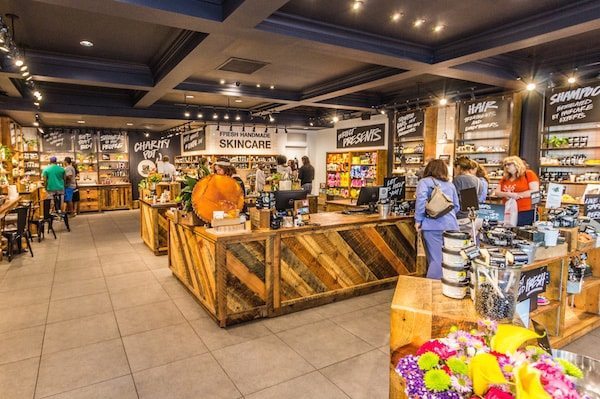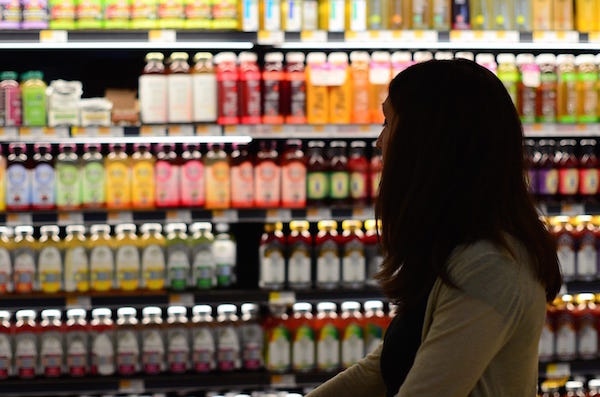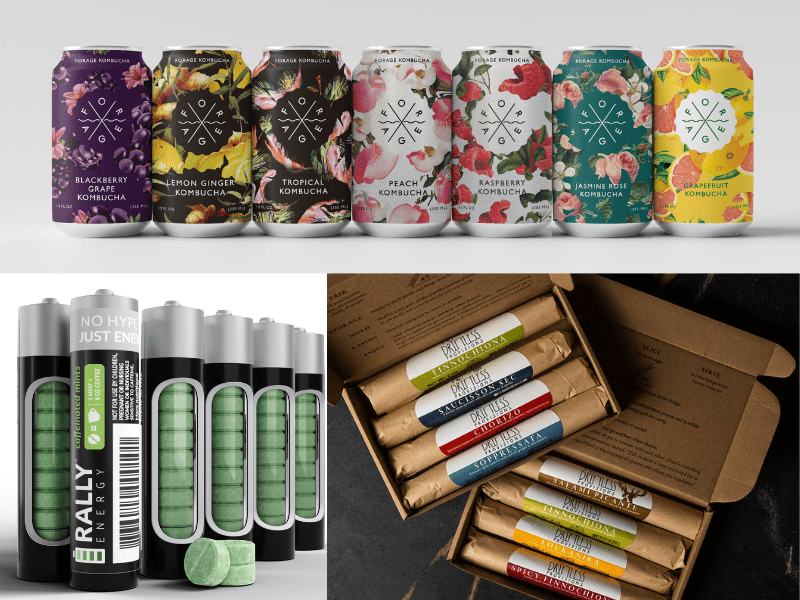Being a food entrepreneur is in some ways about balancing empirical reality and a belief in something you cannot see clearly, like where your business will be in 3-5 years. You need to believe, and yet you need to be able to empirically and defensibly say that you have a clear path forward to justify that belief. That’s where clearly stating your assumptions comes in.
We often work with entrepreneurs to help them understand what are realistic assumptions about their sales growth, or their capital structure, given their business model. Food and beverage companies largely serve understood markets, meaning that there are already dominant business models that determine how business is done and profits are made in the food and beverage industry. It doesn’t mean that there isn’t room for business model innovation, but the people most likely to innovate are the ones that understand the dominant models and their realistic financial drivers.
Our assumptions about scale and optimal capital structure are based on our work and dialogue with entrepreneurs to ensure that we are grounding ourselves in the current reality of the marketplace. For wholesale brands (CPG) companies, we have found that it is financially unrealistic for them to slowly scale up to national distribution. Thus, once they are committed to going national, we encourage them to get there as quickly as possible. This often means taking on outside investors to finance their growth, largely to invest in marketing, to get people who have never heard of their product to try it.
Sometimes entrepreneurs assume they have to say yes to every opportunity in order to grow the way they want, but not all opportunities fit with the business’ model. As Rufus Haucke of Keewaydin Farms talks about on our podcast, when he was building his local food distribution business, he accepted an offer to move the aggregation function of that business off of his farm to take advantage of infrastructure in a nearby town that might support future growth. However, doing so meant he was farther away from his supplier farmers, thus making his operation less efficient even as he increased sales. He stared this empirical reality in the face and reflected how his current operations were not meeting his goals as an entrepreneur. So, he chose to strategically shrink his business and moved operations back to farm, building on efficiencies to eventually make his business profitable and grow again.
It can be hard to know what is realistic and what isn’t without mentorship and help. We encourage all food entrepreneurs to clearly state their assumptions about the future and test those assumptions constantly, asking the advice of people who they can trust to ground-truth their ideas and actions. Only then can their business be grounded in reality so they can be free to dream big.
And now, our roundup of the best food and beverage finance news, events and resources from around the web…
Business Model Insights
- Righting the ship: How a second-generation store owner took the helm in a time of crisis (New Hope Media) – “Wild Oats and Whole Foods Market moved to town. We’d been the only game in town, so we figured our customers would be loyal and we didn’t need to worry. But our stores didn’t have a leader or visionary, so sales fell 50 percent. In those days, there was a lot of speculation about us closing, from the community and our employees and vendors. We had to dig ourselves out of this financial hole we’d created. A lot of vendors didn’t want to ship us more products because we already owed them money. But I faced this head-on with open and honest conversations. I told them that if we filed for bankruptcy, they wouldn’t get any money from us. But if we could pay them back slowly, I could promise they’d get every penny and, ultimately, our continued business. We got really creative with vendors.”
- 8 Business Plan Myths That Can Hurt Your Business (SBA blog)
- Sustainable Sources of Competitive Advantage (Collaborative Fund)

Raising Capital
- Investors are bankrolling you, not just your brand (New Hope Media) – “Ignore distribution and velocity. Forget about whitespace, disruption and innovation. It’s not about the scalability of the business or its margins and COGS. Nope, at the end of the day, what investors are truly investing in is you. The above list is critical, but to an investor, the absence of any one is usually a non-starter. The differentiator is the belief they have in you and the team you’ve assembled.”
- VMG Has Over a Half-Billion to Invest. Here’s How to Get Its Attention. (Taste Radio)
- Planning to Apply for Business Credit? 3 Guidelines for Success (SBA Blog)
CPG/National Brands
- CPGs Are Exploring Foodtech Through Startup Incubators (The Spoon) – “There’s no shortage of news about foodtech startups and the incubators that hatch them. Of late, though, an old player has entered this relatively new space: the CPG. Huge corporations like Kraft and General Mills are struggling to stay relevant and maintain market share. According to one recent study, U.S. food and beverage sales for the top 25 food manufacturers declined from 66 percent in 2012 to 63 percent in 2015. It makes sense, then, that these CPGs are associating themselves with startups through foodtech accelerators and incubators. Some simply invest, while others actually run their own programs or partner with programs.”
- Albertsons offers analysis of digital ads impact on sales (FoodDive)
- What’s Your Data Focus? Retail Store Data or Shopper Panel Data? (CPG Data Tip Sheet)

Market Trends
- National Grocers Association survey uncovers what shoppers want from their local stores (New Hope Media) – “Over 80 percent of shoppers prefer their local grocery store to an online alternative, and two-thirds feel at least very satisfied with their local supermarket. Most of the people who do shop for groceries online do so in addition to shopping in person at their local store, and the majority of their purchases happen at the store. While convenience drives online shopping, the need to see items and persistent concerns about freshness are the main factors working against it. The study found that when consumers are satisfied with the in-store experience, they’re more likely to do the following things: continue to shop at the store instead of online; speak positively about and recommend the store to others, both through word of mouth and through social media; and support the local supermarket because it is linked to the community.”
- Expo West 2018 Recap Part 1 and Part 2 (BevNet)
- Investors increase appetite for grocery-anchored assets while store expansions taper (Refrigerated & Frozen Foods)
Farming and AgTech
- Organization pushes new regenerative organic certification program (FoodDive) – A new regenerative organic certification was unveiled last week during Natural Products Expo West by the Regenerative Organic Alliance. The alliance said it has been working on setting up the certification framework since last fall and, after collecting comments from farmers, ranchers, certifiers and other stakeholders, plans to launch a pilot program this year with producers, brands and certifying organizations. Educational tools also are planned to help producers incorporate regenerative organic practices into their operations and to bring in other brands interested in creating program-certified products.
- Food Tech Trends In 2018 (CB Insights)
- The ongoing evolution of organic: Why it’s popular and where it’s heading (FoodDive)

Deals/M&A
- Incubate, accelerate, acquire … or just keep knocking-off? (FoodDive) “Every day brings more news of major food conglomerates floundering and frantically reaching to regain their lost followers. It’s quite clear that the same problem is plaguing all of these big manufacturers — they are failing to develop and distribute the types of products that consumers want today. With that in mind, accelerators and incubators will likely be the best weapons for the next crop of Big Food CEOs. Currently, these businesses’ R&D departments function under a centralized, methodical, stage-gate decision-making model focused on testing and retesting, where they’re trying to get the future 99 percent right. What big food R&D departments now need to embody is a decentralized, entrepreneurial, fail-fast-fail-early model.”
- Innovation: A key ingredient for growth (RSM)
- Hungry for Investment: Big Food Races Toward Startups (CB Insights)
Industry Events
- Techstars Farm to Fork Accelerator Due (Techstars) – Free to apply, 4/8 online
- Financial Management Boot Camp (Food Finance Institute) – $, 4/9 – 4/10, 5/7 – 5/8 in Fairfield, IA
- Farm Law Focus Session: Business Structures, Sales, Employment (Farm Commons) – Free, 4/13 online
- Optimizing Business Models for Profitability & Growth (Food Finance Institute) – $, 4/19 – 4/20 in Saint Paul, MN
- Fearless Farm Finances Workshop (MOSES) – $, 4/27 in Wisconsin Dells, WI
- Farm Law Focus Session: Land, Events, and Value-Added Production (Farm Commons) – Free, 4/28 online
- Furthering Food Safety Workshop (UW-Stout) – $, 5/24 – 5/26 in Menomonie, WI
- Project Nosh Pitch Slam (Project Nosh) – $, 6/4 – 6/5 in New York, NY
- BevNet Live (BevNet) – $, 6/6 – 6/7 in New York, NY
- Smart Food Expo (Various Orgs) – $, 6/25 – 6/27 in Chicago, IL





